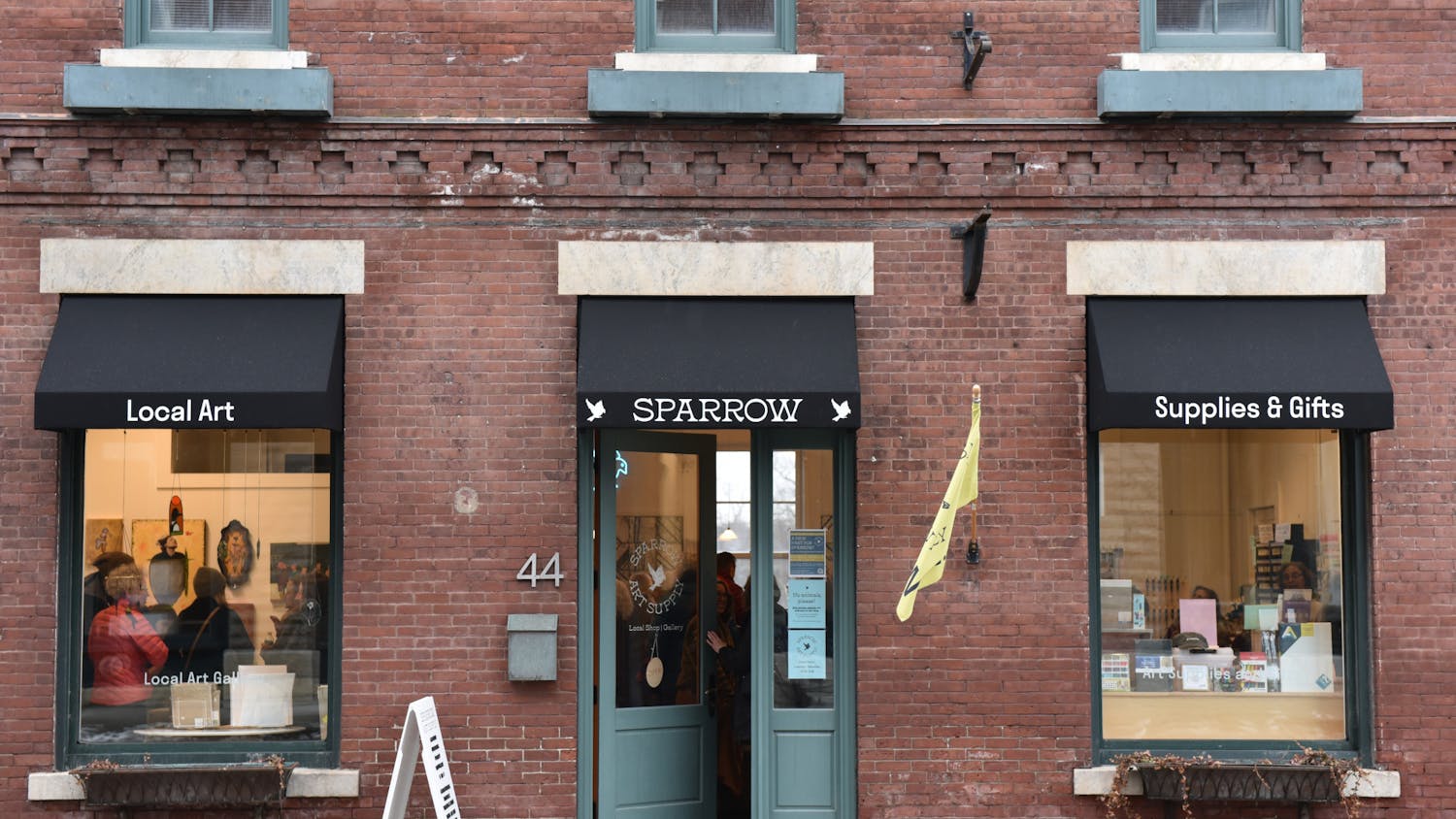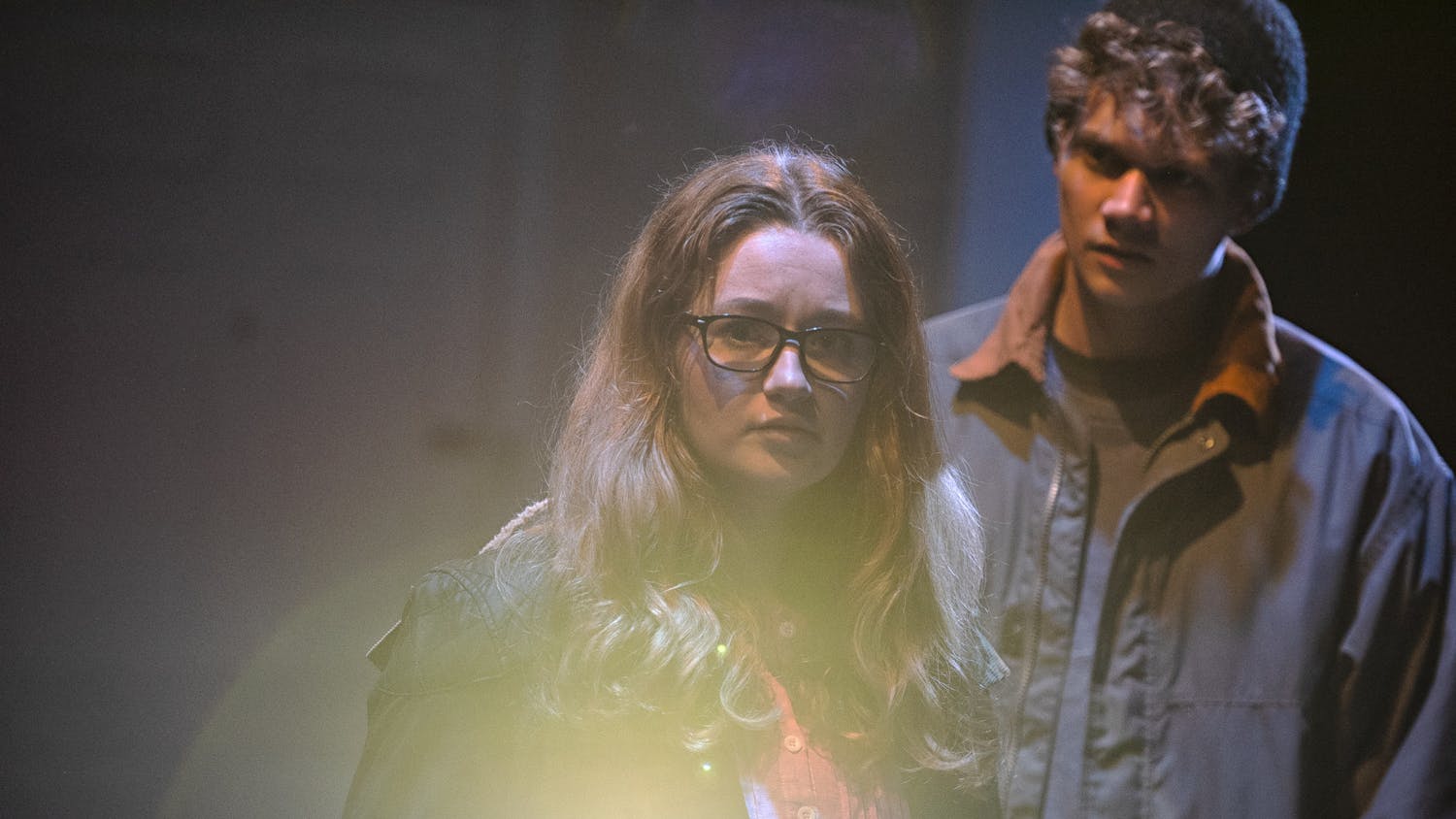Author: Kate DeForest Arts Editor
This year the College community has been graced by a series of notable lectures and talks as part of the traveling Smithsonian exhibit "Young America." By viewing the majestic, and oft pastoral or romantic, landscapes one gets a sense of the expansiveness the new American horizon presented. All of the benefits one gets from viewing great art, of course, cannot be broken down into terms of dollars and cents. However, the works themselves, be they canvas or paper, painting or sculpture, are very much within the realm of an economic mode that America has grown to dominate: capitalism.
The generic idea of American art in the past few centuries was focused through an economic lens this past Saturday, by means of the "Market for American Art" slide lecture. Speakers Frederick Lapham '70, and Paul R. Provost '87 were graciously introduced by Emmie Donadio, associate director Middlebury College Museum of Art. Amidst the copia of the two's various accomplishments (Provost is currently the international business director, American art, at Christie's New York and holds a doctorate in American Paintings from Princeton, after first completing a master's in art history from Williams, Lapham has served on the board of director's for Sotheby's, North America, has been chairman of the Vermont Arts Council and currently owns Lapham & Dibble Gallery in Shoreham, with a second location in NYC, both remain involved in their alma mater by serving on the College's arts council, Lapham currently being chair of that council) Donadio commented on the nature of the successful art dealer: the necessary combination of a quick wit and a lively intelligence and the ability to balance scholasticism with personal charm.
Both Lapham and Provost had the easy poise of men used to filling an auditorium with their presence while giving the impression of those who would be equally at home in a hushed gallery. Lapham opened the lecture by launching into the history of American art and the recent market for paintings from the 18th century up to the second world war. He began by examining a rather sweeping landscape by Frederick Church called "Home By the Lake," which provides the first landmark sale for work by an American artist: in 1987 the painting brought in a less-than-modest $8.25 million.
The price the Church brought, according to Lapham, "stunned" both those present at the auction, resonating well beyond the walls of that room to reverberate throughout the entire collecting community. The sum paid for the painting isn't incredibly vast compared to the amounts paid for a Picasso ("Femme aux bras croisés" (1902) recently sold for $55 million) or other European impressionist masters, whose finest regularly bring in the tens of millions of dollars, but consider that in 1965 a finer Church painting (in respect to "Home By the Lake") had sold for a comparatively paltry $50,000. The latter painting, now residing in the Cleveland Museum of Art (an institution blessed with extremely astute foresight concerning the purchase of American art through the 60s to the present), is currently valued at about $22 million.
The interest in art produced by American artists is a relatively new phenomenon, thought American artists have not been absolutely short of patrons, nor have they been totally neglected. However, as recently as the 1960s and early 70s one could, if one had the means, pick up a masterpiece for anywhere from $5,000 - $20,000. It was, as Lapham succinctly stated, "a good time to learn the art business." One could invest without risking too much, and the market was on the upswing. The boom regularly saw the sale of paintings to be worth ten times the original purchase price in today's market.
However, it was the 1980 purchase of a "The Iceberg," another Church masterpiece of considerable size (64 by 112 inches) that proved, as Lapham explained, "a real sea change for the possibilities in the price structure for American paintings."
In such a specific and exclusive market (after all, there are a very select few who can drop a couple hundred thousand bucks on what, in the most basic nonetheless truthful terms, is a wall decoration), a few major players are all that is necessary to affect the dynamics of that market. In the early 80s, seven or eight such extremely wealthy players began to drive up the prices of American art, specifically that of the Hudson River School, to heights the art world had but imagined.
However, the Hudson River School did not and does not hold exclusive rights to the attention of collectors worldwide. Several other trends emerged during the 80s including appearance of a steadily appreciating market for Western, or so-called "Cowboy and Indian," art. Perhaps one of the most interesting markets from a psychological point of view, the market in this type of work is fueled mostly by collectors who live in the areas the art depicts, and who have made their fortunes by regionally exclusive means like mining and oil. There is something almost reverential about the purchase of such art, the self-made men buying depictions of those who made the West accessible; a way of showing respect to their own.
After 1987 the market flattened out, eclipsed by a "feeding frenzy" by Japanese buyers of French Impressionist works. Suddenly, the focus had shifted, and jaws were agape over two major purchases: an $80 million Van Gogh and a $79 million Renior. However, the purchases proved to be the high watermark, the tide receeded and the market fell into a deep depression in 1990. By contrast, the market for American art, has remained relatively constant since its initial boom of the early 70s, the demand for "Cowboy and Indian" art being especially stable.
Provost, tailoring his segment of the lecture to Lapham's as finely as the perfectly constructed tan suit he wore, began with a blue-toned impressionist work by Childe Hassam called "Flags; Afternoon on the Avenue." The 1917 work struck a particularly familiar chord as the expression of national pride currently displayed almost everywhere was eerily echoed in the depiction of New York City's legendary Fifth Avenue, bedecked with the American flag. It takes further examination to realize, interspersed among the Stars and Stripes, are the flags of the Allies of WWI. "Flags" was sold, in 1998, for around $8 million.
In another astute observation, Provost quoted an artist emblematic of the American creative genius, when he invoked the words of Walt Whitman: "These United States are the greatest poem." He, more than Lapham, theorized on the driving forces of the American art market, naming a sense of patriotism, pride in country and pride in place as the main factors; American paintings are primarily bought by "Americans who have made their fortune in the free economy."
Provost's numbers roughly paralleled those quoted by Lapham, though the artists he named – Hassam, Georgia O'Keeffe, Mary Cassatt, Andrew Wyeth, Edward Hopper and Winslow Homer (about whom Provost had written his dissertation) – evoke quite a different sense of American painting than did the artists of the former time period. The romantic blasted trees and academically realistic landscapes now replaced by opalescent flowers and crisp portraits of rugged workmen. However different the subject matter and style, the major artists of the 20th century are much in demand, especially when put into the context of an American market. Provost gave Cassatt as an example of an artist who, when classified under different headings, could fetch a markedly different price in each instance.
Cassatt, the American impressionist who emigrated to France, is considered by those who collect French impressionism to be a "B" artist among the French circle with whom she was grouped (Manet, Monet, Degas). However, put into an American context, she is very much an "A" artist. Though a Cassatt masterpiece would get a similar price under either classification, Provost g
ave an example of a lesser work that was "bought in" (that is, did not sell) when grouped with her French contemporaries, but sold for $700,000 in an American based auction.
The market for American art, it seems, is an ever-expanding entity. As American artists, past and present, become more established within the minds of the American people as being masters of their medium, no doubt the demand for such work will continue to increase. As Provost suggested, whether it be a museum purchase or private acquisition, it is above all a passionate appreciation for the art that maintains a successful market.
Auctions and Aesthetics Valuing American Art
Comments



